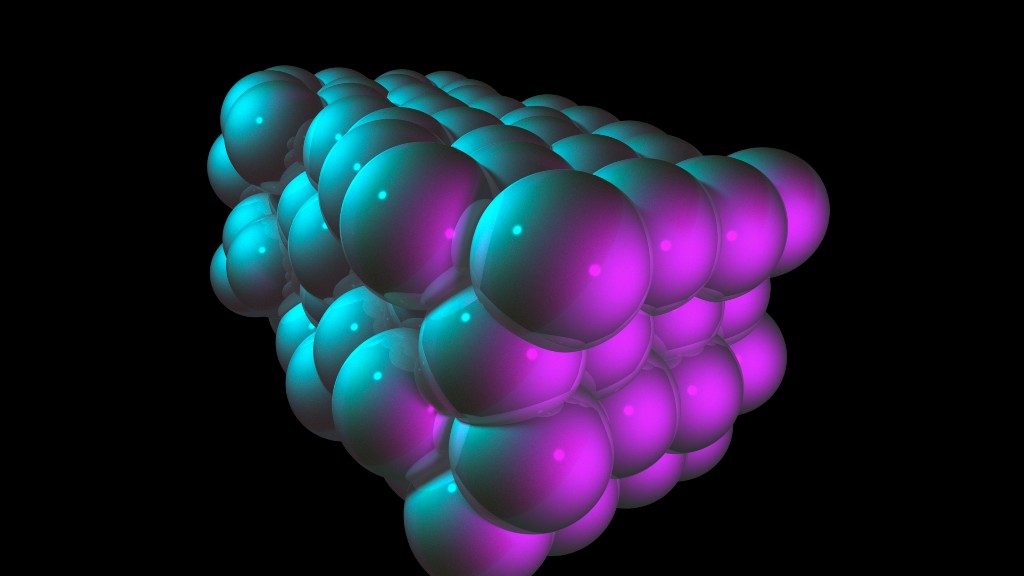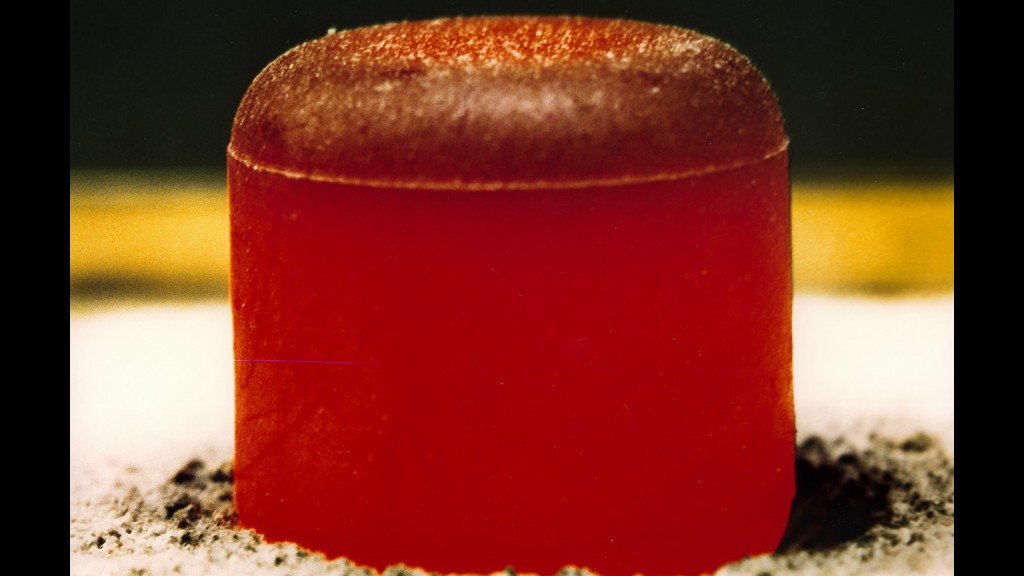Plutonium: Facts about the radioactive element
You can hold plutonium in your hand, but it has the potential to destroy entire cities.

Plutonium is radioactive, but it doesn't seem that harmful at first glance. It looks like any other metal, with a silvery sheen that turns dull in contact with the air. Queen Elizabeth II held a piece during a visit to Britain's Atomic Energy Research facility at Harwell in 1957. It was warm to the touch, but it didn't hurt.
According to the World Nuclear Association, even eating it doesn't really do any harm, although it's definitely not recommended.
Plutonium atoms fall apart through a process called alpha decay. They release particles made from two neutrons and two protons (essentially a helium nucleus). They're so bulky that they can't pass through human skin. Left to its own devices, plutonium decays slowly. The real danger comes when humans interfere.
Related: What is the Standard Model?
An isotope of plutonium named plutonium-239 is fissile, which means that it can start a nuclear chain reaction. The United Nations lists it as one of only two radioactive isotopes used to make atomic bombs. When you hit a plutonium-239 atom with a neutron, more neutrons will spill out. When those neutrons hit other plutonium-239 atoms, the same thing happens again. And again. This releases an enormous amount of energy.
Under the right conditions, the energy from nuclear fission can be harnessed for good. The heat released can boil water, which can make steam, which can spin turbines. According to the World Nuclear Association, a third of the energy made by nuclear power plants comes from plutonium.
But it can also be used as a weapon. In 1945, the United States developed a bomb containing a small sphere of plutonium and then used it to devastate the Japanese city of Nagasaki.
Breaking space news, the latest updates on rocket launches, skywatching events and more!
Where does plutonium come from?
The International Panel on Fissile Materials estimates that there are now 140 tons of weapons-grade plutonium worldwide. It forms part of the so-called 'nuclear deterrent' in countries like the USA, the UK, and Russia.
According to the National Nuclear Security Administration, you only need a bowling-ball-sized amount of plutonium to make a pit, the core of an atom bomb. But, getting hold of the raw materials isn't easy.
Plutonium doesn't really exist in nature; it only comes from nuclear reactors. The International Atomic Energy Agency says that there's one place in Africa, called Oklo, where the conditions were just right to create the element naturally. But most plutonium is completely human-made.
Plutonium power
A radioisotope thermoelectric generator, RTG for short, is a nuclear battery. It captures the heat from decaying plutonium and turns it into electricity using wires called thermocouples. When one end of a thermocouple gets hot, a current starts to flow.
RTGs are used to bring power to the remotest of places, from lighthouses on hazardous coastlines to probes in outer space. But you can't use any old radioactive element to make them.
NASA has a strict list of criteria for nuclear batteries. The fuel must be safe, in case of a launch accident. It mustn't release too much beta, gamma, or neutron radiation, because they interfere with equipment. It must be stable because you don't want it to explode. It must have a long half-life because you can't change a battery in space. And it must be light because it needs to get off the launch pad.
The World Nuclear Association says that, of the 2,900 known radioactive isotopes, plutonium-238 is one of just 22 suitable for the job.
The discovery of plutonium
Plutonium is a relatively new addition to the periodic table.
According to the Los Alamos National Laboratory, scientists first encountered it during World War Two. In 1940, scientists at the Berkeley Radiation Laboratory were experimenting with uranium, firing heavy hydrogen atoms at the element to see what would happen.
Uranium is radioactive, and the bombardment caused it to split apart, releasing another radioactive element, neptunium. That element was unstable, and it decayed into yet another, unknown radioactive element. Following the planetary theme, the scientists called it plutonium. Its potential as a nuclear weapon was immediately evident and within two years top-secret production had started at the Metallurgical Laboratory in Chicago.
Plutonium uses
Nuclear weapons
According to the Royal Society of Chemistry, a kilogram of plutonium can produce a blast equivalent to 10,000 tonnes of chemical explosives. Nuclear treaties aim to prevent the use of these devastating weapons.
Space heaters
The electrical components on spacecraft operate best at certain temperatures. Plutonium-238 releases a lot of heat when it decays, helping to warm these delicate instruments in deep space.
Thermal energy
The heat generated by decaying plutonium can be captured and turned into electricity. According to the World Nuclear Association, one kilogram of plutonium can make 8 million kilowatt hours of electricity.
Nuclear pacemakers
A handful of people in the United States have plutonium-powered pacemakers. These devices are not dangerous inside the body, but the Los Alamos National Laboratory disposes of them carefully when they're removed.
Additional resources
To learn more about the details of Plutonium, you can visit the Royal Society of Chemistry website. Additionally, to find out about the use of Plutonium-238 for space exploration, read this article from the American Chemical Society.
Bibliography
"The drama of plutonium". Nuclear Engineering International (2005).
"Plutonium". World Nuclear Association (2021).
"Alpha decay". Atomic Archive (2022).
"Fissile material". The United Nations.
"Fissile material stocks". International Panel on Fissile Materials (2022).
"Plutonium Pit Production". National Nuclear Security Administration (2022).
"Meet Oklo, the Earth's Two-billion-year-old only Known Natural Nuclear Reactor". International Atomic Energy Agency (IAEA) (2018).
"Thermocouple sensor". OMEGA (2022).
"About Plutonium-238". NASA Radioisotope Power Systems.
"Atomic number 94". Los Alamos National Laboratory (2021).
"Metallurgical Laboratory at the University of Chicago". Office of Legacy Management.
Laura Mears is a biologist who left the confines of the lab for the rigours of an office desk as a keen science writer and a full-time software engineer. Laura has previously written for the magazines How It Works and T3. Laura's main interests include science, technology and video games.



